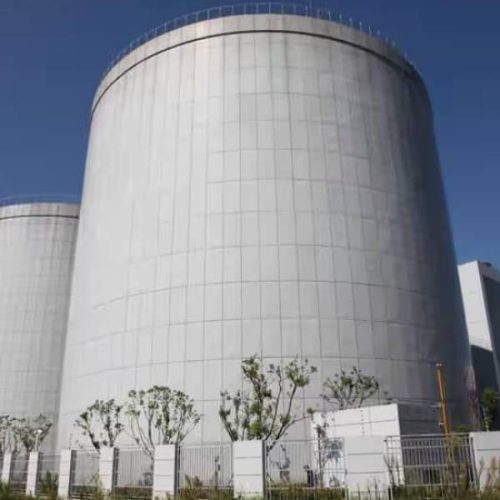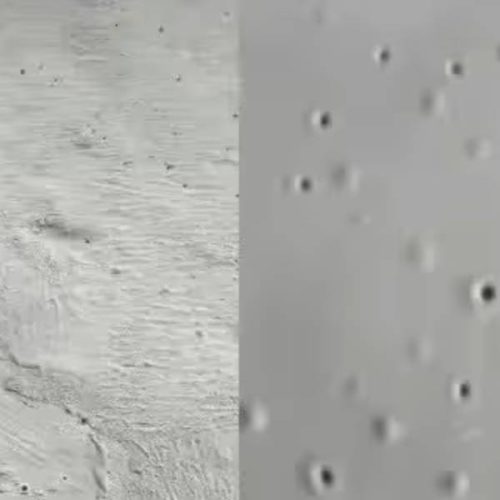Latest News
-
 Recommended and Unsuitable Applications of PolyureaKnowledge19 Nov, 2024
Recommended and Unsuitable Applications of PolyureaKnowledge19 Nov, 2024Polyurea is widely applied in waterproofing, especially the advanced third-generation polyaspartic formulations. Due to its excellent physicochemical properties, ease of application, and environmental benefits, it is considered superior to many conventional waterproofing materials and techniques. However, despite its many advantages, polyurea has limitations in certain applications.
Learn More -
 Polyaspartic Waterproof Coating: Superior Solution for Exterior WallsKnowledge19 Nov, 2024
Polyaspartic Waterproof Coating: Superior Solution for Exterior WallsKnowledge19 Nov, 2024The exterior wall transparent polyaspartic waterproof coating is made by reacting high-purity polyaspartic resin with isocyanate prepolymer. This creates a durable and transparent waterproof layer. It adheres directly to substrates like wall tiles, resisting peeling, surface powdering, or blister formation. This product provides long-lasting waterproof protection, excellent weather resistance, strong adhesion, flexibility, abrasion resistance, crack resistance, and eco-friendliness. It effectively prevents water seepage, ensuring a reliable and extended service life for wall surfaces.
Learn More -
 What are Eco-friendly Coatings? How to Choose Eco-friendly Coatings?Knowledge19 Nov, 2024
What are Eco-friendly Coatings? How to Choose Eco-friendly Coatings?Knowledge19 Nov, 2024Eco-friendly coatings are advanced products that meet environmental and safety standards while offering performance benefits across various applications. Key types include UV-curing, powder, water-based, high solid content, and polyaspartic polyurea coatings. Polyaspartic polyurea stands out for its low VOC emissions, fast curing, and excellent durability, making it ideal for industrial anti-corrosion, waterproofing, and flooring, despite its higher cost. These coatings contribute to sustainability by reducing energy consumption, eliminating wastewater treatment needs, and ensuring strong performance under diverse environmental conditions.
Learn More -
 Third-Generation Polyaspartic Polyurea: Differentiation and AdvantagesKnowledge19 Nov, 2024
Third-Generation Polyaspartic Polyurea: Differentiation and AdvantagesKnowledge19 Nov, 2024Polyurea has evolved significantly over the years, leading to the development of three generations: aromatic polyurea (first generation), aliphatic polyurea (second generation), and polyaspartic polyurea (third generation). As of now, aromatic polyureas dominate the market with a 70% share, followed by polyaspartic polyureas at 25%, and aliphatic polyureas at 5%.
Learn More -
 Benefits of Polyaspartic Coatings in Steel Bridge ProtectionKnowledge18 Nov, 2024
Benefits of Polyaspartic Coatings in Steel Bridge ProtectionKnowledge18 Nov, 2024Polyaspartic coatings are high-performance, environmentally friendly two-component polymer materials. They form a dense, continuous protective layer on steel surfaces, effectively isolating them from air and resisting various chemical agents. These coatings also offer excellent decorative and weather-resistant properties, retaining color and resisting aging under prolonged UV exposure.
Learn More -
 Common Issues in Waterproof Coating ApplicationKnowledge15 Nov, 2024
Common Issues in Waterproof Coating ApplicationKnowledge15 Nov, 2024Polyaspartic elastomers are a novel, slow-reacting, high-performance, and non-yellowing aliphatic coating material that has recently emerged in the polyurea industry. Known as the third generation of polyurea, Feiyang's polyaspartic resin is a solvent-free, transparent liquid modified with aliphatic secondary diamines (terminal amino group polyether) and is also called PAE resin. It can react directly with NCO-containing triisocyanates (either aromatic or aliphatic) or blend with hydroxyl-containing polyester and acrylate resins before reacting with NCO isocyanates to form SPUA polyurethane elastomer coatings.
Learn More
